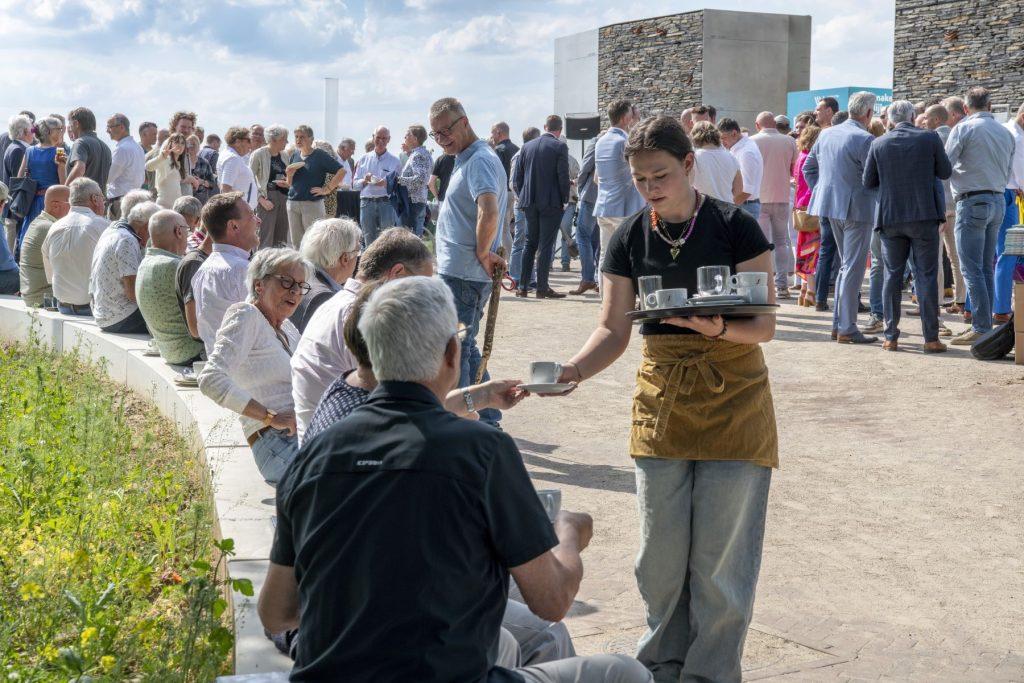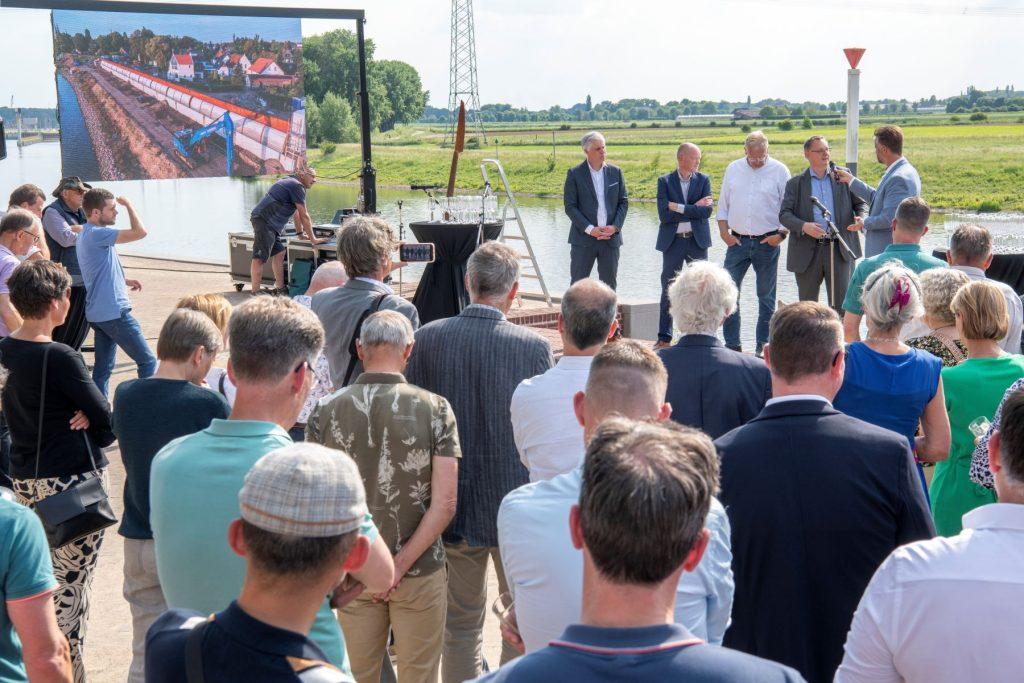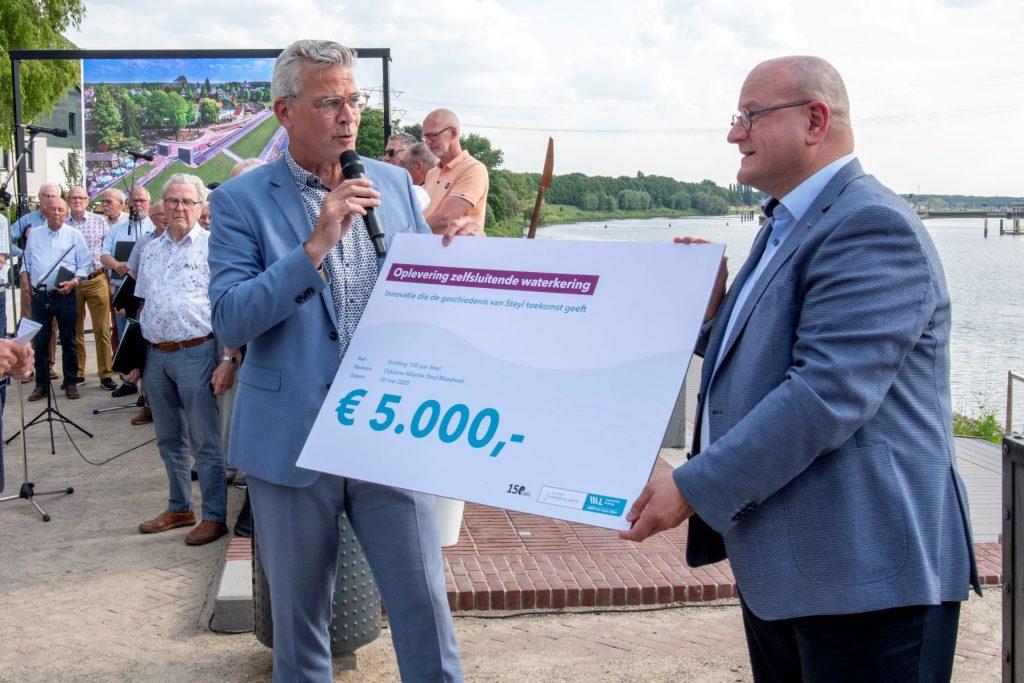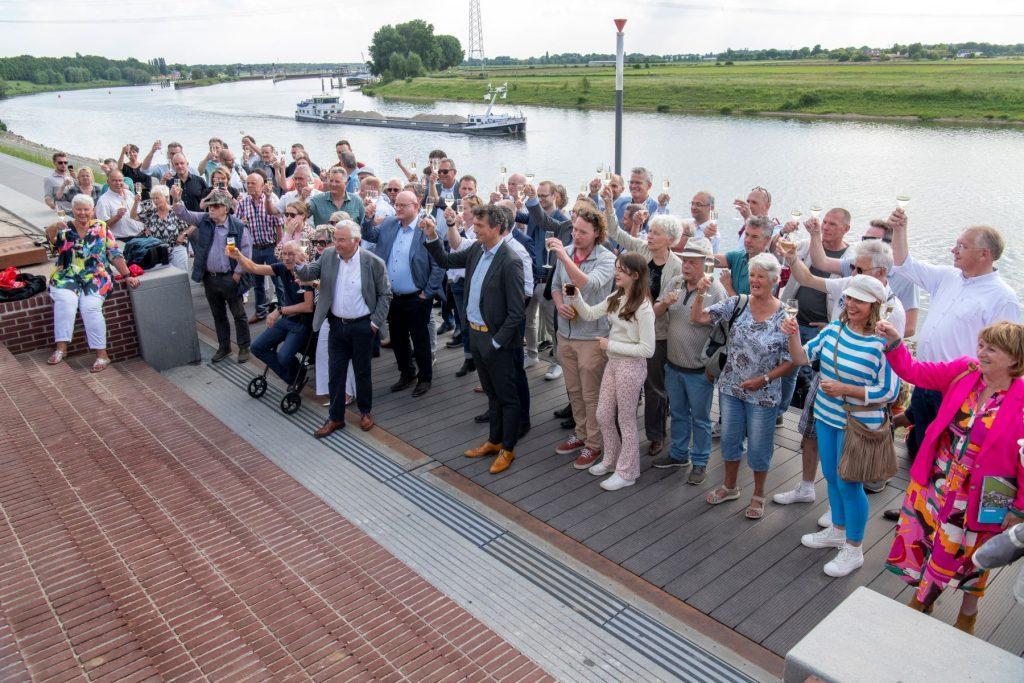On Tuesday 20 May, the largest self-closing flood barrier in the Netherlands was officially inaugurated in the monastic village of Steyl. This innovative barrier will now automatically protect the village and the surrounding area against high water from the River Meuse. The opening marks the completion of a unique project that brings together technology, landscape and community in an exceptional way.
The Steyl barrier is a Vlotterkering®, consisting of 14 steel gates that rise automatically with rising water levels. In their resting position, they lie flat, providing additional space for walking or sitting. The project was realised by Dijkzone Alliantie – a partnership between Ploegam, Hollandia Infra and Dura Vermeer – commissioned by Waterschap Limburg.
“Steyl and its surroundings protected from high water for 100 years”
According to Jeroen Achten, board member of Waterschap Limburg, this marks an important step in protecting the region:
Flood protection is only as strong as its weakest link. The old barrier in Steyl no longer met the standard. Thanks to this innovative solution, Steyl and its surroundings will be protected against high water for the next 100 years.
He continued:
We have invested in something that has never before been applied on this scale. This project is not only important for Limburg, but also serves as an example for similar challenges in the Netherlands and abroad.
Innovation with respect for the landscape
Alderman Marij Pollux described the new barrier as a textbook example of technical innovation combined with landscape integration:
The village of Steyl deserves to be protected against flooding. At the same time, we wanted to preserve its historic character as much as possible. This barrier achieves both: increasing flood safety while also adding value to the landscape. I hope residents are proud of what has been achieved here.
The design ensures that the view of the village has largely been preserved. The public space around the barrier has been renewed with sustainable materials and ecological features, in keeping with the character of the monastic village.
Collaboration as the key to success
Gijs Ploegmakers, CEO of Ploegam, reflected proudly:
The strength of this project lies in the combination of smart technology, close cooperation and attention to the environment. The Vlotterkering® is a robust solution with worldwide potential. Achieving such a high-quality technical and aesthetic result together makes this project unique.
Diederik van Rijn, Director of Hollandia Infra, added:
With the Dijkzone Alliantie we have delivered a world first: the first self-buoyant flap barrier. We are especially proud that this barrier not only provides recreational value in its resting state, but also delivers robust protection during high water. Precision steel construction is at the core of Hollandia’s expertise. This project presented unique challenges in watertightness, design integration and robustness — challenges we addressed with innovative bespoke solutions.
Eric Withaar, Programme Director at HWBP, concluded:
This is a magnificent achievement. This self-closing barrier is driven by innovation – a remarkable feat of hydraulic engineering of which we can all be proud.
Festive opening on 20 May
During the opening event in Steyl, local residents and project partners were welcomed. Board member Jeroen Achten and Ploegam CEO Gijs Ploegmakers symbolically opened the barrier by turning a large wheel, revealing the word veilig (“safe”). The men’s choir of Zangvereniging Vriendenkring from Steyl performed several songs, and all attendees received a photo book capturing the construction of the self-closing barrier.
High Water Protection Programme (HWBP)
To continue protecting residents and businesses in the Meuse Valley against future flooding, daily work is being carried out on strengthening dikes. This requires close cooperation between Waterschap Limburg and its partners. Together, they decide what is most important for the area, building towards a flood-safe and attractive Limburg landscape.
The Steyl-Maashoek dike reinforcement is part of the national High Water Protection Programme (HWBP) – the largest dike reinforcement operation since the Delta Works. Over the next thirty years, water authorities and Rijkswaterstaat will strengthen more than 1,400 kilometres of dikes and 400 locks and pumping stations across the Netherlands.
Read more about this project:






